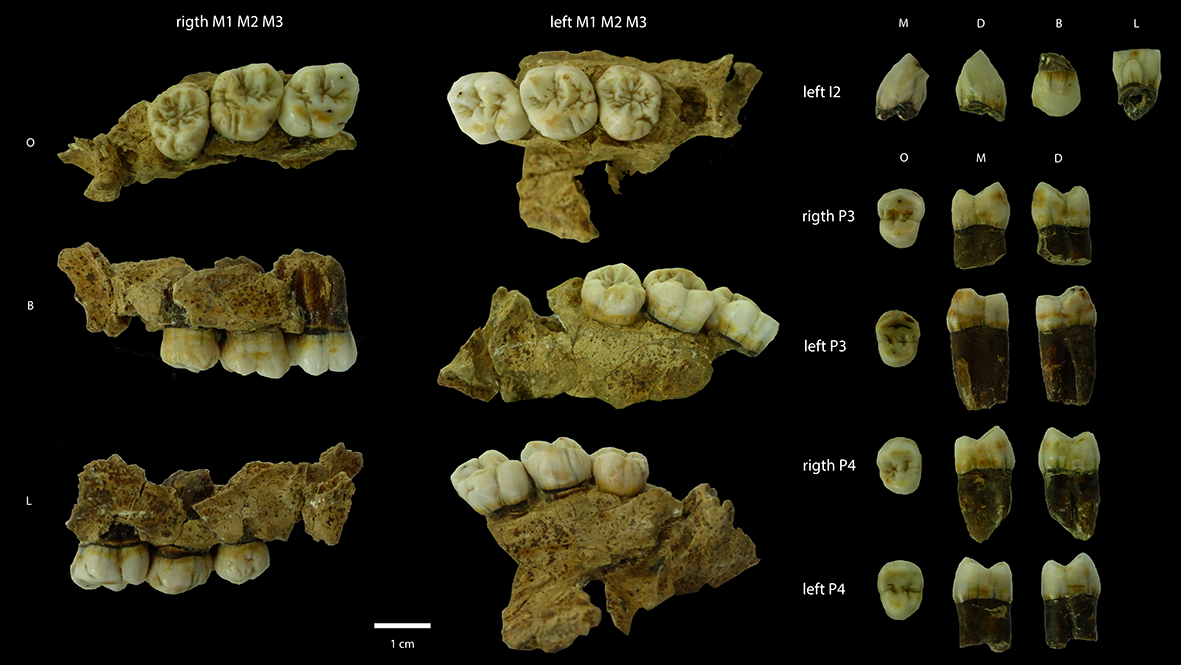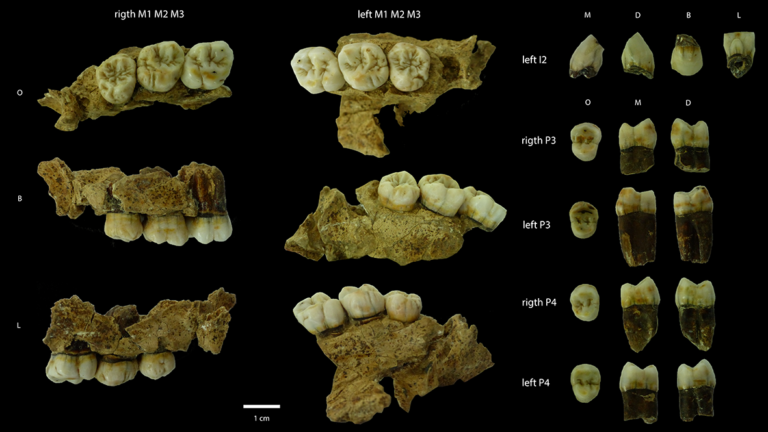European Middle Pleistocene populations had similar dental traits

Laura Martín-Francés, a researcher at the Centro de Evolución y Comportamiento Humanos (UCM-ISCIII), and affiliated to the Centro Nacional de Investigación sobre la Evolución Humana (CENIEH), has published a comparative study in the journal Archaeological and Anthropological Sciences, whose objective was to establish the relationships among the fossil teeth found at the Biache-Saint-Vaast (BSV) site, in northeast France, with teeth of other European Middle Pleistocene populations.
The results indicate that the individuals from the BSV site present dental traits, both morphological and metrical, similar to those in other Middle Pleistocene populations, like those from Sima de los Huesos (Atapuerca, Burgos), and also those from the Montmaurin (France) and Visogliano (Italy) sites, which have greater affinity with the Neanderthals.
Moreover, the BSV fossil teeth show a clear affinity with those from Sima de los Huesos because they also share the pattern of mixed enamel thickness, namely, with thin enamel on the front teeth, while the back teeth are characterized by thick enamel.
“The variability observed in the European Middle Pleistocene fossil record points to the coexistence of two or more populations during this period. The settlement of Europe is the result of intermittent population movements from a “mother” population situated outside that continent”, concludes Martín-Francés.
Spanish-French team
This work is the latest in a series of collaborative studies on the variability of Middle Pleistocene populations by a team of researchers from the Centro Nacional de Investigación sobre la Evolución Humana (CENIEH), the Centro Mixto Universidad Complutense de Madrid – Instituto de Salud Carlos III de Evolución y Comportamiento Humanos (UCM-ISCIII), and the National Natural History Museum (MNHN) in Paris. The analyses of the dental pieces were conducted using the micro-computed tomography (mCT) technique at the laboratories of the CENIEH and the National Natural History Museum in Paris.
Bibliographic information:
Martín-Francés, L., Bermúdez de Castro, J.M., Martínez de Pinillos, M., Martinón-Torres, M., Arsuaga, J. L., Bertrand, B. & Vialet, A. (2022), Middle Pleistocene hominin teeth from Biache-Saint-Vaast, France, Archaeological and Anthropological Sciences, 14, 215. https://doi-org.ubu-es.idm.oclc.org/10.1007/s12520-022-01680-6
Press release from Centro Nacional de Investigación sobre la Evolución Humana – CENIEH



